The departure of Ferrari team principal Mattia Binotto means Formula 1’s most historic team will have its sixth different leader in 15 years.
Some of its rivals have had no change at the top during that entire one-and-a-half decade spell. Others have felt the knock-on effects of Ferrari’s need to replace Binotto, the upshot of which is half of those who led F1 teams 12 months ago have moved on since then.
F1 team principals over the past 15 years
Hover over each principal for more information:
NB. For purposes of illustration it is assumed the current team principals will remain in place at least until the start of the coming season
Formula 1 teams tend to change their driver line-ups more than team principals, but when either position is vacated by someone who has been there for many years it can then take several attempts to find an appropriate successor.
Jean Todt led Ferrari from July 1994 to December 2007, and in that time the team won seven constructors’ titles, six drivers’ titles and 98 races under his watch. Quite a benchmark for the next team principal to be compared against.
Longevity does not necessarily mean success, even surviving for year after year in a highly political team like Ferrari, because there is usually a reluctance to remove underperforming team principals if there is not an appropriate replacement lined up ready to go.
In the merry-go-round that has been instigated by Mattia Binotto’s recent resignation as Ferrari team principal, it has now left Alfa Romeo spending their off-season in search of a new leader. That’s manageable during December, but teams can’t risk being in that position while racing is going on.
Binotto was the fourth person to hold the role since Todt’s tenure ended. The first change was pre-planned: Todt worked with his successor Stefano Domenicali to prepare him for the role, and he did take Ferrari to the constructors’ title in his first season in charge in 2008.
But Domenicali’s tenure, during a time when Ferrari often did have cars capable of winning races, led to no further titles after that. Ferrari’s poor start to the V6 hybrid turbo era in 2014 spelled the end for him. Domenicali resigned just three races into the season, and by the year’s end Ferrari had only reached the podium twice.
Ferrari picked Marco Mattiacci to replace him: A man with no F1 experience, he became the shortest-serving of Todt’s successors, shown the door by the end of the year.
Advert | Become a RaceFans supporter and
Next up was Maurizio Arrivabene, another Ferrari-linked man via sponsor Philip Morris but another with no F1 team experience. But he stayed at the helm through four seasons during which Ferrari were championship runners-up three times. He was replaced by Binotto in January 2019, Ferrari promoting from within, but he will be replaced by current Alfa Romeo team chief Frederic Vasseur in the new year.
Only one team has had as much rotation at the top. But Alpine, unlike Ferrari, has lacked continuity from top to bottom, and gone through different owners and guises during the same 15-year spell.
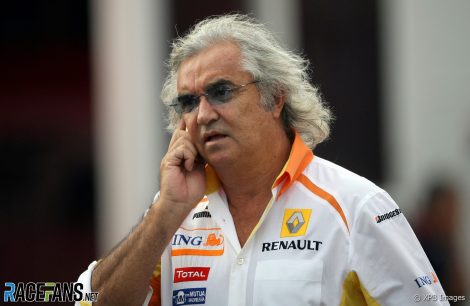
In 2007 the team was owned by and entered as Renault, with Flavio Briatore at the helm. But the exposure of the ‘Crashgate’ scandal in 2009 led to his departure and Bob Bell took his place. For 2010, Renault became only a minority owner in the team and Eric Boullier was brought in as team principal.
He lasted four years in the role, although technically was principal of two teams as Renault sold on the remainder of its shares and the Enstone-based constructor was known as Lotus from 2012 onwards.
Boullier left in February 2014 when, once again, the team changed owners. But it took until April for a new leadership team to be put in place, with the inexperienced Matthew Carter named as chief executive, the long-time majority owner Gerard Lopez becoming team principal and Federico Gastaldi being installed as his deputy. In reality it was Gastaldi taking on the principal role, until another takeover.
This time Renault came back on board, and with their 2016 return they made Cyril Abiteboul their leader as managing director. Although he continued in that position for some time, Frederic Vasseur was hired as team principal in July, but he left the team in January leaving Abiteboul once again as the team’s number one.
Advert | Become a RaceFans supporter and
Abiteboul spent a further four years in charge until the next major change led to another rotation of leader. For 2021 the team became Alpine, and Abiteboul departed.
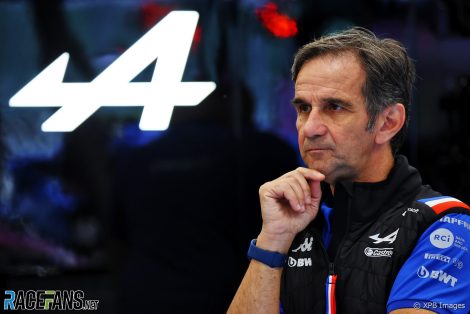
It took a week for him to be replaced, initially in the form of racing director Davide Brivio. The surprise signing, who arrived with experience from Moto GP, only held the reigns independently for just over six weeks before the unusual ‘no team principal’ set-up Alpine had adopted was adjusted.
In March, Alpine decided to split his job responsibilities equally between himself and executive director Marcin Budkowski. One reason given for this was how the demands of running an F1 team between two locations (Alpine’s chassis base is in Enstone, UK while its engines are produced in Viry-Chatillon, France) had become even more complex during the Covid-19 pandemic and with a calendar that was becoming increasingly intense in scheduling and length.
Brivio was running the team solo again by January 2022 as Budkowski left, but again he was only given that individual power for a month before he was moved into a new position by the team and Otmar Szafnauer joined from Aston Martin as team principal.
Most other teams have managed to navigate the last 15 years without as much change as Alpine and Ferrari, but McLaren matches their long-time rival in having gone through six distinct eras of leadership.
Advert | Become a RaceFans supporter and
Ron Dennis’s 28-year tenure ended in 2009 when he decided to hand his over role to Martin Whitmarsh, but a coup then led to him regaining power within the team and installing Boullier as Whitmarsh’s successor, in the role of racing director, in 2014.
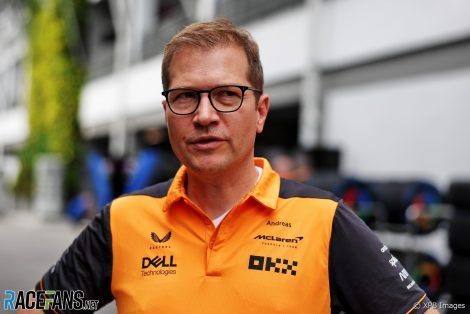
This was at a time when McLaren were becoming less competitive on-track, and Boullier only saw his drivers make the podium once before resigning halfway through 2018. The reshuffle that followed split his responsibilities between Gil de Ferran (sporting director) and Andrea Stella (performance director), with de Ferran occupying the more public-facing role.
That arrangement stood until Andreas Seidl arrived at McLaren in May 2019 as team principal – a move announced several months earlier – and he was set to remain in that position until at least the end of 2025. But Binotto’s recent resignation triggered several other moves, including Seidl leaving McLaren several years early to become Sauber CEO. Seidl’s place has been taken by Stella, who McLaren describe as being promoted from a management to a leadership role for the first time.
With Vasseur leaving Sauber for Ferrari to replace Binotto, it leaves them looking for someone to replace their longest-standing team principal of recent times. Mario Theissen was at the helm during the company’s era as BMW Sauber, then founder Peter Sauber took over when BMW pulled out of F1.
He passed on the role to Monisha Kaltenborn in 2012, making her the first female team principal in F1. After a strong start, Sauber slid down the pecking order, financial pressures taking an increased toll.
A Honda engine deal was agreed on for 2018 but soon afterwards Kaltenborn was dropped, Vasseur came in and famously made ending the Honda deal his first order of business. He renegotiated to continue taking on engines from Ferrari and oversaw the team’s transition to become Alfa Romeo. This year they finished sixth in the championship, their best result since Kaltenborn’s first year.
Advert | Become a RaceFans supporter and
Another team which was once run directly by its founder is Williams. Frank Williams was team principal from 1977 to 2020, although in March 2013 the trackside running of the team was taken on by his daughter Claire in the capacity of deputy team principal.
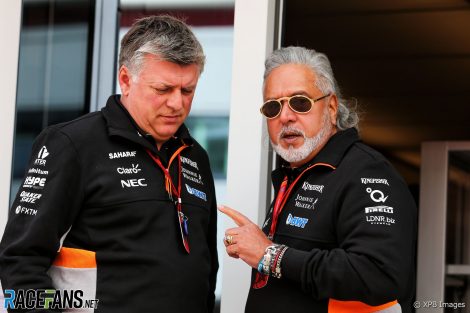
The pair made the big decisions for the team until it was sold on to Dorilton Capital in September 2020, when Simon Roberts became a placeholder team principal. At the end of the year Jost Capito joined as CEO, and he then assumed the team principal position in June of the next year until his departure was announced this month. The team is yet to name his replacement.
Despite the turmoil at times with their ownership since 2007, Aston Martin have sought continuity by holding on to their team principals. Colin Kolles kept the Silverstone-based team together as it went from being Midland in 2006 to Spyker in 2007 and then Force India in 2008, but new owner Vijay Mallya assumed control from him that October and was officially team principal for the next decade.
The day-to-day running of Force India was soon placed in the hands of Szafnauer, who became chief operating officer. That proved essential as problems in Mallya’s business empire beyond his F1 team increasingly began to intrude.
Szafnauer’s role grew, he attended FIA meetings on Mallya’s behalf and eventually became team principal in 2018 when the outfit was saved from collapse by a consortium led by Lawrence Stroll which purchased its assets during the season. It became Racing Point and, in 2021, Aston Martin.
However Szafnauer soon moved on, jumping ship to Alpine this year. Mike Krack was named as his replacement in January and is remarkably now F1’s fifth longest-serving active team principal.
In fourth place is Haas’s Gunther Steiner, who was employed in his position April 2014 ahead of the team’s debut in the 2016. He’s been at the helm through the entire of Haas’s F1 history.
Advert | Become a RaceFans supporter and
It took until 2018 for Mercedes’ motorsport boss Toto Wolff to be commonly called its team principal, with Niki Lauda and Paddy Lowe getting as much attention for their parts in Mercedes’ success during his previous four years at the team.
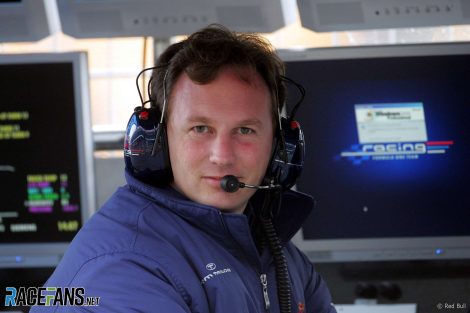
Although Wolff’s initial responsibility was business, he quickly became closely on the sporting side, and 2022 has been the first year since he joined that Mercedes haven’t won the constructors championship. His current contract ends next winter, and he “will have the subsequent opportunity to transition to a new executive function within the organisation when he decides it is the right time to do so”.
Before Wolff, Ross Brawn led the Brackley-based squad through their final year as Honda, their title-winning resurrection as Brawn GP in 2009 and then rebuilding period as Mercedes.
Red Bull can claim to have the two longest serving team principals in F1, with Franz Tost leading Toro Rosso/AlphaTauri since their creation in 2006 and Christian Horner running Red Bull Racing since the team was established the year prior. There’s no sign of either of those two moving on, and Horner will be looking to match Wolff’s title haul following his team’s spell of success in the early 2010s and Max Verstappen’s last two years of title victories.
Wolff and Horner’s long spells in charge underline the value of consistency at the top of an F1 team. Whether Ferrari’s recent trend of regular changes will end with their latest appointment remains to be seen, but those higher up in the organisation have made it clear they expect better results, and whether Vasseur delivers them is likely to prove the determining factor.
Become a RaceFans Supporter
RaceFans is run thanks in part to the generous support of its readers. By contributing £1 per month or £12 per year (or the same in whichever currency you use) you can help cover the costs of creating, hosting and developing RaceFans today and in the future.
Become a RaceFans Supporter today and browse the site ad-free. Sign up or find out more via the links below:
















